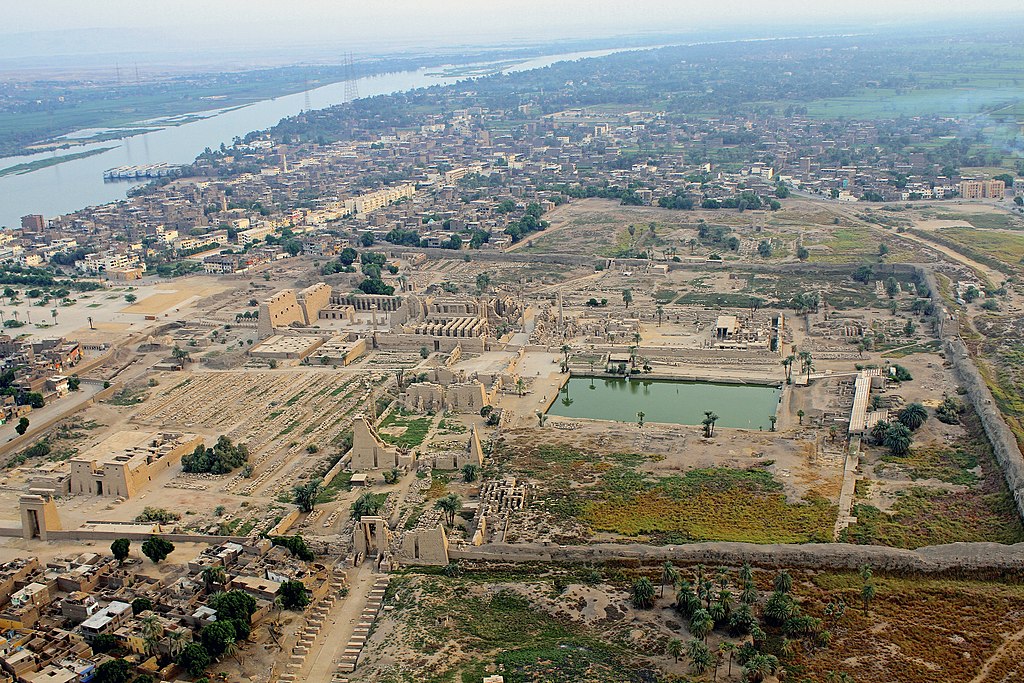Exploring Ancient Egypt: A Timeless Civilization of Wonders and Legends
Ancient Egypt, a civilization that thrived for over three millennia along the Nile River, continues to captivate the world with its awe-inspiring monuments and enigmatic legacy. From majestic pyramids to intricate hieroglyphics, this ancient land stands as a testament to human ingenuity, artistry, and spirituality.
Throughout its history, Ancient Egypt faced various challenges, including internal strife, external invasions, economic issues, and shifts in power dynamics, ultimately leading to the decline of each major period in its history. These factors collectively contributed to the eventual downfall of each era.
Important years of Ancient Egypt
Here are some significant dates and periods in Ancient Egyptian history:
Narmer’s unification of Upper and Lower Egypt: Around 3100 BCE or 5,122 years ago (First Dynasty begins)
Narmer, also known as Menes, is believed to have unified Upper and Lower Egypt, marking the beginning of the First Dynasty. This event symbolizes the consolidation of Egypt under one rule, establishing a centralized government.
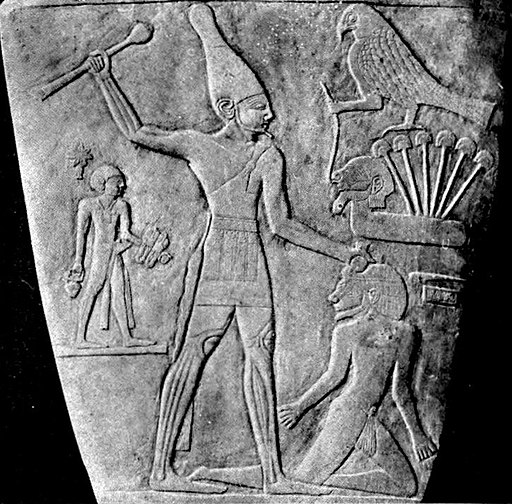
King Narmer, also known as Menes, was an ancient Egyptian pharaoh who is believed to have ruled during the Early Dynastic Period, around 3100 BCE. He is credited with the unification of Upper and Lower Egypt, symbolized by the merging of the two crowns—the red crown of Lower Egypt and the white crown of Upper Egypt. This unification marked the beginning of the First Dynasty and is considered a pivotal moment in ancient Egyptian history, establishing a centralized rule and initiating the era of pharaonic civilization. Unknown sculptorUnknown sculptor, Public domain, via Wikimedia Commons
Old Kingdom: Approximately 2686–2181 BCE or 4,867 to 4,140 years ago (Characterized by pyramid construction, including the Great Pyramid of Giza)
This era is renowned for monumental construction projects, notably the building of pyramids. Pharaohs such as Khufu, Khafre, and Menkaure commissioned these awe-inspiring structures, including the Great Pyramid of Giza. The Old Kingdom represents a time of stability, prosperity, and the emergence of elaborate burial practices.
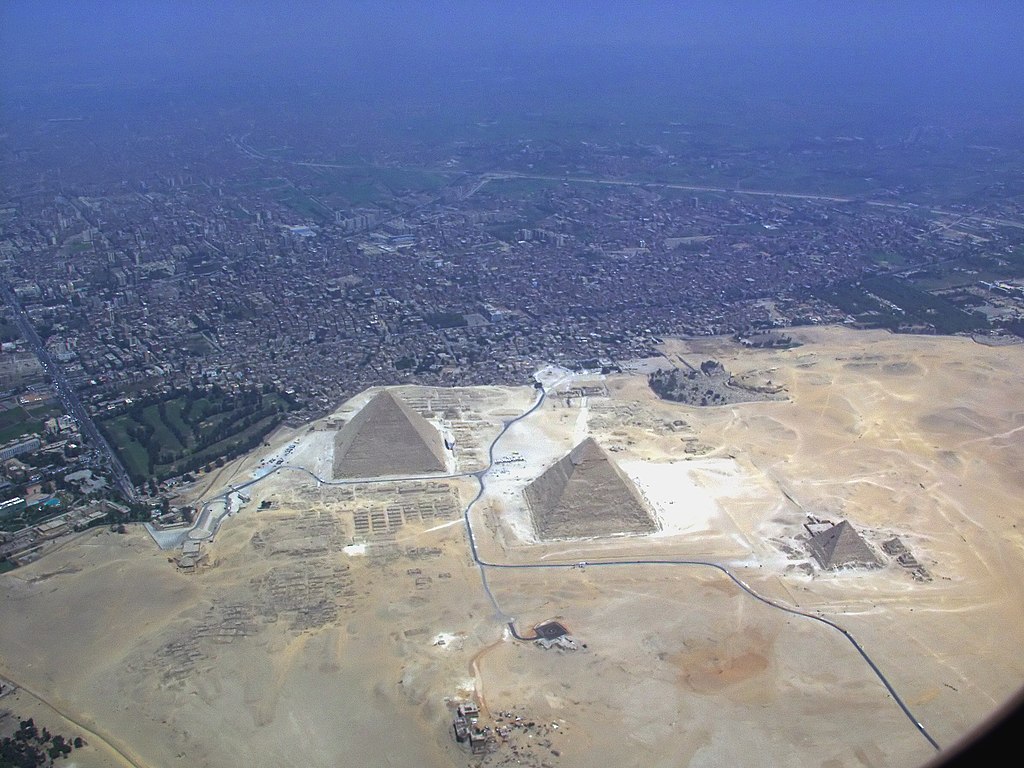
Aerial photo of the Giza pyramid complex showcases the breathtaking view of the three main pyramids—Khufu, Khafre, and Menkaure—set against the desert backdrop near Cairo, Egypt. Constructed around 2560 BCE or 4,582 years ago during the reign of Pharaoh Khufu, it’s the largest of the Giza pyramid complex. The photo captures the scale and alignment of these monumental structures, offering a unique perspective of their layout and the surrounding landscape, providing a sense of the awe-inspiring magnitude of the ancient architectural feat. © Raimond Spekking (CC BY-SA 4.0) via Wikimedia Commons
End of the Old Kingdom (Approx. 2181 BCE or 4,203 years ago):
The Old Kingdom faced several challenges, including weakened central authority, famine, and economic difficulties. Internal struggles and the breakdown of the ruling power resulted in the collapse of the central government.
Middle Kingdom: Approximately 2055–1650 BCE or 4,076 to 3,671 years ago (A period of cultural and artistic renaissance)
The Middle Kingdom saw a renaissance in Egyptian culture. It was marked by advancements in literature, art, and architecture. Pharaohs focused on public works, expanding infrastructure, and irrigation systems. The period also embraced greater social equality, as reflected in literature and art.
End of the Middle Kingdom (Approx. 1650 BCE or 3,671 years ago):
The Middle Kingdom saw an eventual decline due to a combination of factors, including political instability, regional uprising, and invasions by foreign powers, notably the Hyksos. These invasions weakened the central authority and led to the eventual collapse of the Middle Kingdom.
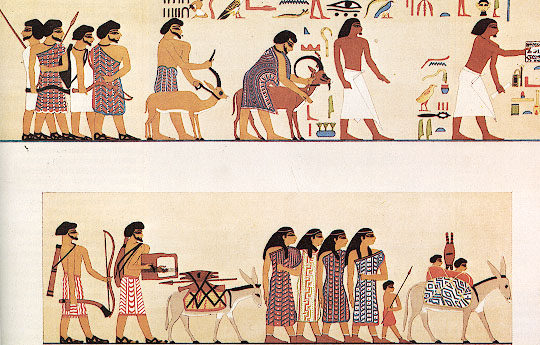
The Hyksos were foreign invaders who controlled parts of ancient Egypt around the 17th century BCE or 3,700 to 3,600 years ago. They introduced advanced military tactics but were later expelled by the Theban pharaohs, leading to the reunification of Egypt. The famous depiction of the Aamu group, often found in ancient Egyptian art, portrays foreign individuals thought to be part of the Aamu people. They are usually depicted with distinct physical features and sometimes depicted in scenes related to tribute, trade, or warfare. These representations often feature characteristics like pointed beards, long hair, and specific clothing styles that set them apart from typical Egyptian depictions, indicating their foreign origin. This depiction can be found in various ancient Egyptian reliefs and artworks. NebMaatRa, CC BY-SA 3.0, via Wikimedia Commons
New Kingdom: Approximately 1550–1070 BCE or 3,571 to 3,091 years ago (Egypt’s zenith with significant military campaigns and grand construction projects)
Regarded as Egypt’s peak, the New Kingdom witnessed significant military campaigns, expansion of territory, and grand constructions. Pharaohs like Hatshepsut (She was a female pharaoh) and Ramses II left a lasting legacy through military conquests, massive temples like Karnak, and the iconic Temple of Hatshepsut at Deir el-Bahari.
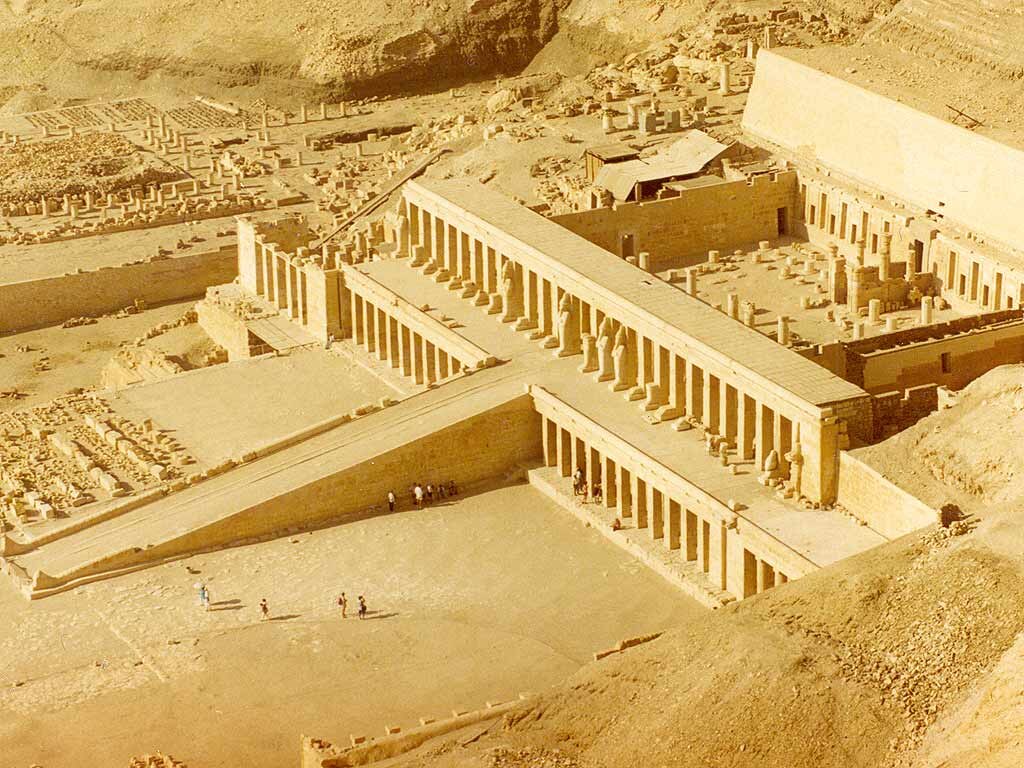
Hatshepsut’s Temple, also known as Deir el-Bahari, is an impressive mortuary temple located in Luxor, Egypt. Commissioned by Hatshepsut, a notable female pharaoh, it features unique terraced architecture and remarkable reliefs depicting scenes from her reign. Despite damage over time, the temple remains a testament to ancient Egyptian architecture and Hatshepsut’s legacy. Ian Lloyd, CC BY-SA 3.0, via Wikimedia Commons
End of the New Kingdom (Approx. 1070 BCE or 3,092 years ago):
The New Kingdom faced internal strife, weak leadership, and threats from neighboring powers. The empire stretched its resources thin due to expansive military campaigns. The decline was also marked by the growing influence of priests and nobility, weakening the pharaoh’s authority.
Late Period: Approximately 664–332 BCE or 2,685 to 2,353 years ago (A time of internal conflicts and foreign invasions)
This phase marked internal strife, foreign invasions, and a decline in centralized power. Egypt faced challenges from various external powers, including the Assyrians and Persians. The kingdom struggled with division and a loss of autonomy, weakening its sovereignty.
Egypt Dynasty | Timeline, List of Egyptian Ancient dynasties and Pharaohs
Alexander the Great’s conquest of Egypt: 332 BCE or 2,353 years ago (Marks the end of native pharaonic rule)
Alexander’s conquest marked the end of native pharaonic rule. Egypt came under the control of the Macedonian-Greek Ptolemaic dynasty, initiating a new era and cultural blend known as the Hellenistic Period. The decline of the Late Period culminated with Alexander the Great’s conquest. Egypt fell to the Macedonian-Greek rule, marking the end of native pharaonic sovereignty and the beginning of the Ptolemaic era.
These dates provide key milestones in Ancient Egyptian history, showcasing the rise, flourishing, and eventual decline of this remarkable civilization over the course of millennia.


